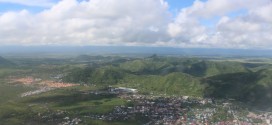By Jewel Edwards
In the wake of the Boston Bombings and a rash of destructive tornadoes in the Midwest, emergency preparedness is arguably more important in the U.S. than ever. Resilient DC is working to construct a framework by which communities in the Metropolitan area can map their assets, organize, and respond to disasters before they strike. The program is particularly helpful to ethnic and cultural minorities, who need more assistance navigating the chaotic environment that large scale catastrophic events bring about.
“To me, Resilient DC is about how to help communities respond to, prepare for, and recover from a range of disasters,” says Anita Chandra, Senior Policy Researcher of the Rand Corporation. Rand partners with communities at the local and federal levels to bring together cultural groups, community organizations and federal agencies to ensure that everyone, and vulnerable populations in particular – those who don’t speak the language, or are physically disabled — have an infrastructure in place to serve them.
Sponsored by the DC department of health, Resilient DC hosted a community forum by the same name on May 15. 110 community organizations convened to discuss how to leverage community assets in order to be better prepared for when disaster strikes. “We are now taking the information from the forum to different groups across DC to develop a Resilience strategy,” says Chandra.

The program operates on the logic that neighbors, having lived close to one another, are more aware of and can better respond each other’s needs. The first step the program advocates? Simply meet your neighbors. Then take the time to meet up, get to know one another, and identify each person’s strengths and weaknesses.
Resilient DC, currently in its infancy, is part of a larger body of research that is dedicated towards researching the best practices to help communities to prepare for hurricanes, tornadoes, and floods as well as other tragic events, like shootings. A similar program in Los Angeles County, Calif. has experienced early successes. Now in its third year, the program has developed a community resilience triplicate. That version has trained numerous community members to be health responders, community leaders, and has helped mapped neighborhood resources. Other community resilience partnerships exist in New York City, Chicago and with the Vietnamese population in post-Katrina New Orleans.

The Los Angeles County program places emphases on making materials not only linguistically accessible to the large numbers of Korean, Vietnamese and Cambodian immigrants In Los Angeles County, but culturally accessible as well.
Representatives are working to achieve the same ends for minority groups through Resilient DC where the organization has engaged with the cultural affairs office of the Mayor, including black, Asian, and Latino groups.
Chandra and her colleagues aspire to weave Resilient DC’s tenants of neighborly support into the fabric of the community, so that help during disasters does not always have to originate from the top down, but from within the community. “We’re developing strategies that work and strategies that get embedded into routine practice,” says Chandra.

Currently, Resilient DC has a Facebook page sponsored by the Department of Health and a Twitter hashtag; #ResilientDC. The organization’s website will be ready to launch by the end of June, which will allow them to connect with even more communities in the D.C. area.
“The bottom line is that we have all ethnic groups represented and obviously, reflecting the diversity of society,” said Chandra. It’s ultimately about broader community health and wellbeing.”
 Asian Fortune Your source for all things Asian American
Asian Fortune Your source for all things Asian American




One comment
Pingback: 07.22 – 29.2013 Virginia Homeland Security Media | Virginia's Military, Veterans & Homeland Security Media Center